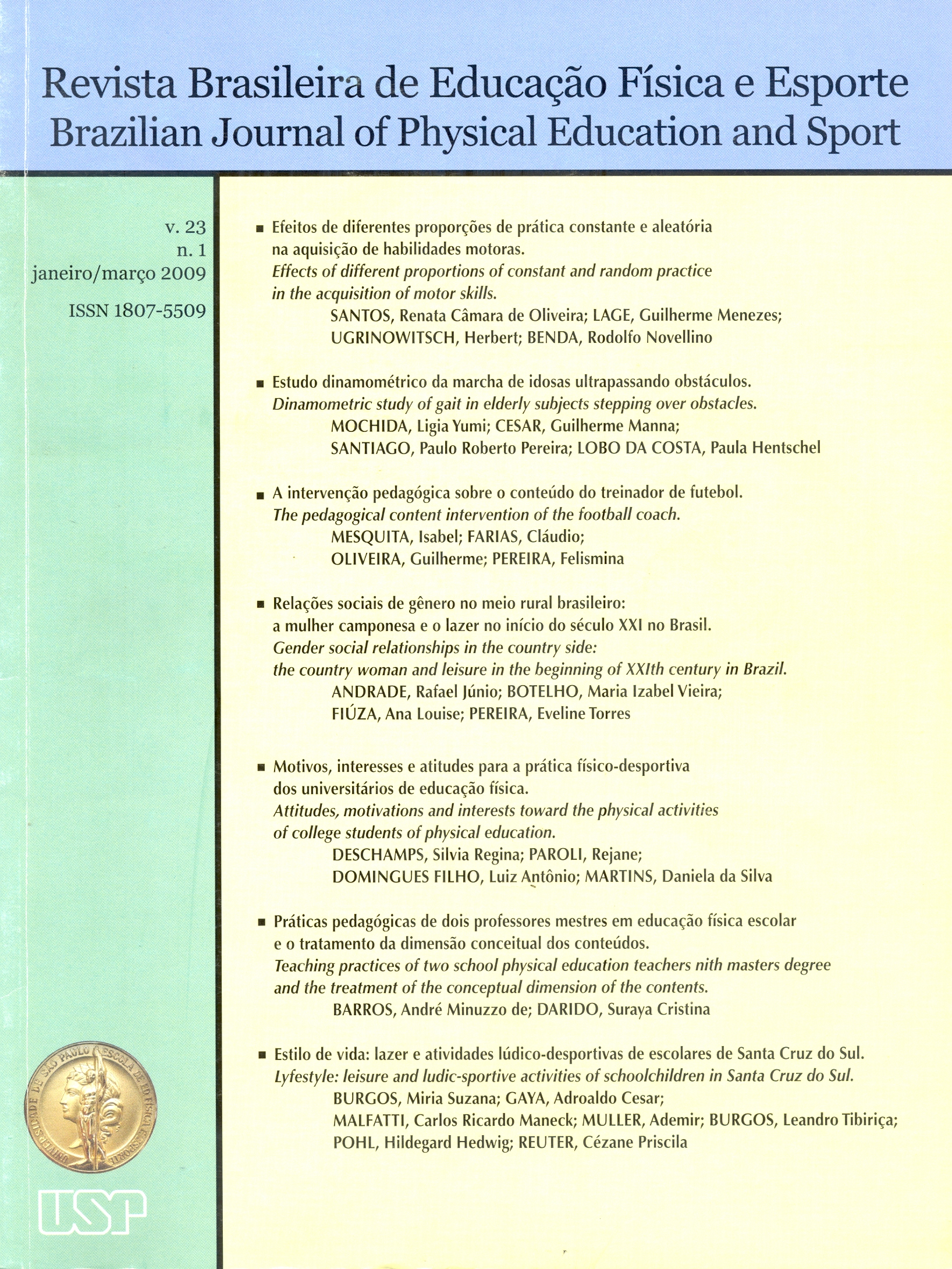Effects of different proportions of constant and random practice in the acquisition of motor skills
DOI:
https://doi.org/10.1590/S1807-55092009000100001Keywords:
Practice schedules, Constant practice, Random practice, Combination of structures of practiceAbstract
The aim of this study was to investigate the effects of different proportions of constant and random practice in the acquisition of motor skills. Thirty volunteers between 18 and 35 years old were randomly assigned to one of three groups with different proportions of constant and random practice: 1) 25% constant and 75% random (G25%); 2) 50% constant and 50% random (G50%); 3) 75% constant and 25% random (G75%). The subjects were asked to touch four keys sequentially with different requirements of absolute timing in a same relative timing structure. All participants performed 120 trials during the acquisition phase. Ten trials were required on each retention and transfer tests. The results obtained through analysis of variance with repeated measures on the last factor (p < 0.05) showed that the 75% of constant practice proportion followed by 25% of random practice produced favorable results in terms of lower variability in motor learning.Downloads
Download data is not yet available.
Downloads
Published
2009-03-01
Issue
Section
naodefinida
License
Todo o conteúdo da revista, exceto onde está identificado, está licenciado sob uma Licença Creative Commons (CC-BY)
How to Cite
Santos, R. C. de O., Lage, G. M., Ugrinowitsch, H., & Benda, R. N. (2009). Effects of different proportions of constant and random practice in the acquisition of motor skills . Brazilian Journal of Physical Education and Sport, 23(1), 5-14. https://doi.org/10.1590/S1807-55092009000100001


